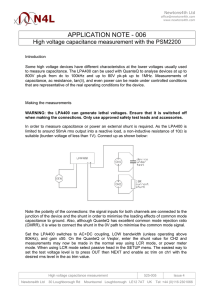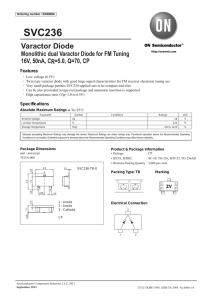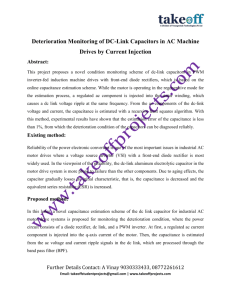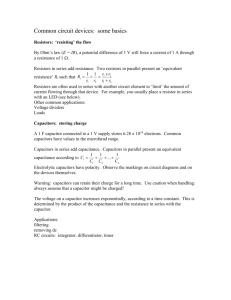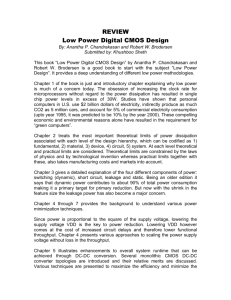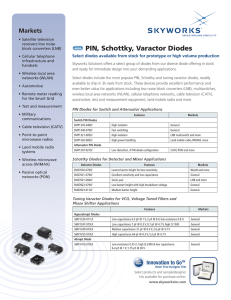MICROWAVE SOLID STATE DEVICES
advertisement
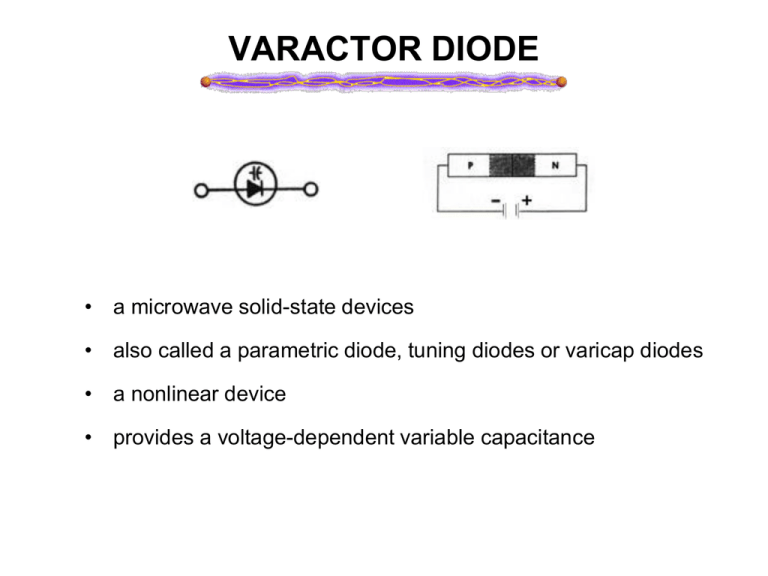
VARACTOR DIODE • a microwave solid-state devices • also called a parametric diode, tuning diodes or varicap diodes • a nonlinear device • provides a voltage-dependent variable capacitance TYPES OF VARACTOR DIODES • Abrupt and hyper abrupt type : When the changeover p-n junction is abrupt then it is called abrupt type. When change is very abrupt, they are called hyper abrupt type. They are used in oscillators to sweep for different frequencies. • Gallium-arsenide varactor diodes : The semiconductor material used is gallium arsenide. They are used for frequencies from 18 GHz up to and beyond 600 GHz. IMPORTANT CRITERIA • Capacitance : Capacitance of the device. Capacitance from a few picoFarads to hundreds of picoFarads is provided. • Capacitance range : Range of capacitance produced when voltage is varied. • Voltage range : The minimum and maximum voltage that can be applied to the device. • Bias current : The bias is always reverse. This means that the varactor diode does not conduct electricity. If the bias is turned positive then the device will start conducting. • Other criteria to be considered include : reverse and breakdown voltage, leakage current, junction temperature. • Voltage and other transients must be avoided. Transients can occur if the DC voltage is put off. CHARACTERISTICS • Low-noise characteristic : produce much less noise than most conventional amplifiers. • Low cost • High reliability • Light weight • Small size CHARACTERISTICS • Notice the nonlinear increase in capacitance as the reverse voltage is decreased. OPERATION • It has a p-n junction of semiconducting material and is always reverse biased. • The depletion zone width depends on the applied voltage and this makes the capacitance vary with the applied voltage. APPLICATIONS • FREQUENCY MULTIPLIERS - used in applications where it’s difficult to generate microwave signals • producing relatively high power outputs at frequencies up to 100GHz • does not have gain ; in fact, it produces a signal power loss • output can be as high as 80% of the input APPLICATIONS • PARAMETRIC AMPLIFIERS. - named for the timevarying parameter, or value of capacitance, associated with the operation. • Since the underlying principle of operation is based on reactance, the parametric amplifier is sometimes called a REACTANCE AMPLIFIER. APPLICATIONS • TUNING - Since the frequency can be made to vary they are used as electronic tuning devices in tuners for television, mobiles. • Other Applications: They are used in PLL, voltage controlled oscillators, harmonic generation, electronic tuning devices in tuners for television, mobiles, parametric amplification, AM radios, voltage-variable tuning, frequency multipliers, etc. ~THE END~
